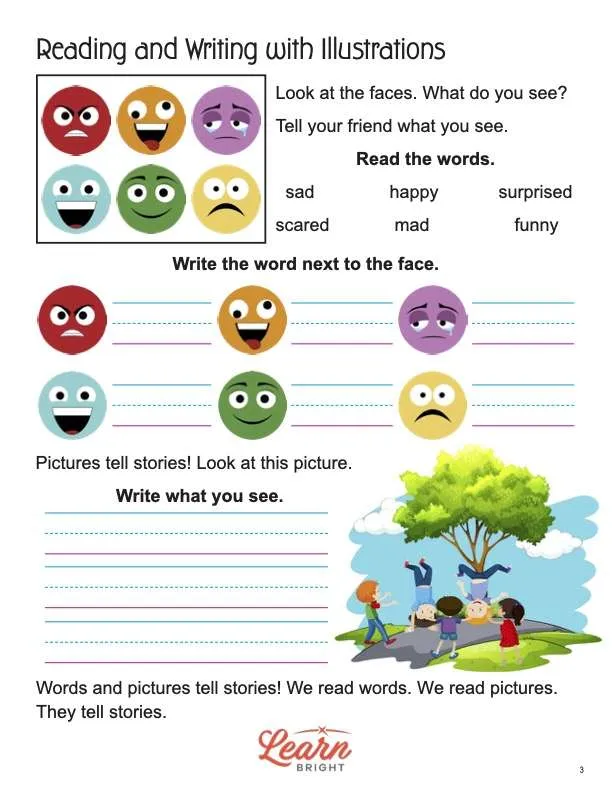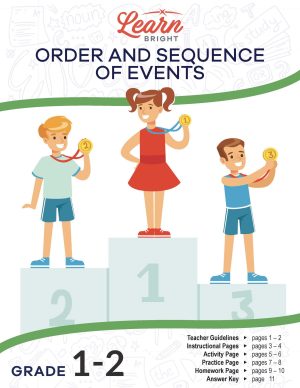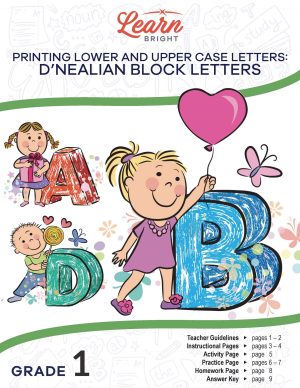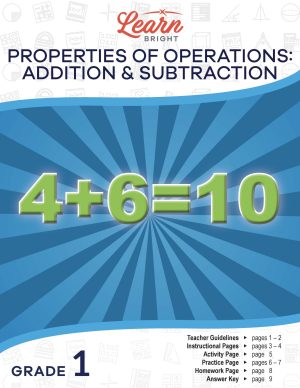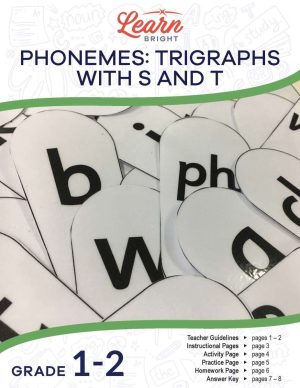Description
What our Reading and Writing with Illustrations lesson plan includes
Lesson Objectives and Overview: Reading and Writing with Illustrations teaches students about using imagery to tell stories. Students will use illustrations to describe a story’s details (character, setting, events). They will use story illustrations to predict what happens next in a story. Finally, they will create a short story using images and grade-appropriate vocabulary. This lesson is for students in kindergarten and 1st grade.
Classroom Procedure
Every lesson plan provides you with a classroom procedure page that outlines a step-by-step guide to follow. You do not have to follow the guide exactly. The guide helps you organize the lesson and details when to hand out worksheets. It also lists information in the yellow box that you might find useful. You will find the lesson objectives, state standards, and number of class sessions the lesson should take to complete in this area. In addition, it describes the supplies you will need as well as what and how you need to prepare beforehand.
Options for Lesson
You can check out the “Options for Lesson” section of the classroom procedure page for additional suggestions for ideas and activities to incorporate into the lesson. When teaching early readers comprehension, it is good to remember they have not acquired a large vocabulary or decoding skills. One option for this lesson is to begin with a picture book. Point to the illustrations first. Ask students to tell you what they see happening, to describe the setting, and predict what they think will happen next. Then read the text that connects to the illustrations.
Teacher Notes
The paragraph on this page provides a little more information or guidance on what to expect from the lesson. It explains that the lesson is written with vocabulary that early learners will understand or be familiar with. You can use the blank lines to record any thoughts or ideas you have as you prepare.
READING AND WRITING WITH ILLUSTRATIONS LESSON PLAN CONTENT PAGES
The Reading and Writing with Illustrations lesson plan contains two pages of content. These pages are interactive. First, they will read six words and then write them next to the correct emoji face. Then they will write what they see in a picture. On the second page, they will create a story by drawing pictures and writing what happens. You can pair up students to tell their stories to each other.
READING AND WRITING WITH ILLUSTRATIONS LESSON PLAN WORKSHEETS
The Reading and Writing with Illustrations lesson plan includes three worksheets: an activity worksheet, a practice worksheet, and a homework assignment. Each one will help students solidify their grasp of the material they learned throughout the lesson. You can refer to the classroom procedure guidelines to know when to hand out each worksheet.
WRITE WHAT YOU SEE ACTIVITY WORKSHEET
Students will look at three photographs. They will then write what they see. (These do not have to be stories. More likely, they will simply be students’ inferences about what is going on in each picture.)
READING AND WRITING WITH ILLUSTRATIONS PRACTICE WORKSHEET
There are two parts to the practice worksheet. First, students will look at two pictures. Then they will draw a picture that illustrates what happens next. Finally, they will write a logical story that goes with the pictures. For the second part, students will draw two pictures to finish a story.
FINISH THE STORY HOMEWORK ASSIGNMENT
For the homework assignment, students will look at several pictures. Then they will draw two more that go along with the pictures. They will write a story based on these illustrations. At the bottom of the page, they will answer a question about whether or not pictures tell stories.
Worksheet Answer Keys
Given the nature of these assignments, the answer keys are more like guides. You can use them to help students if you wish. If you choose to administer the lesson pages to your students via PDF, you can save a new file that omits these pages. Or you can simply print out the applicable pages and keep these as reference for yourself.



